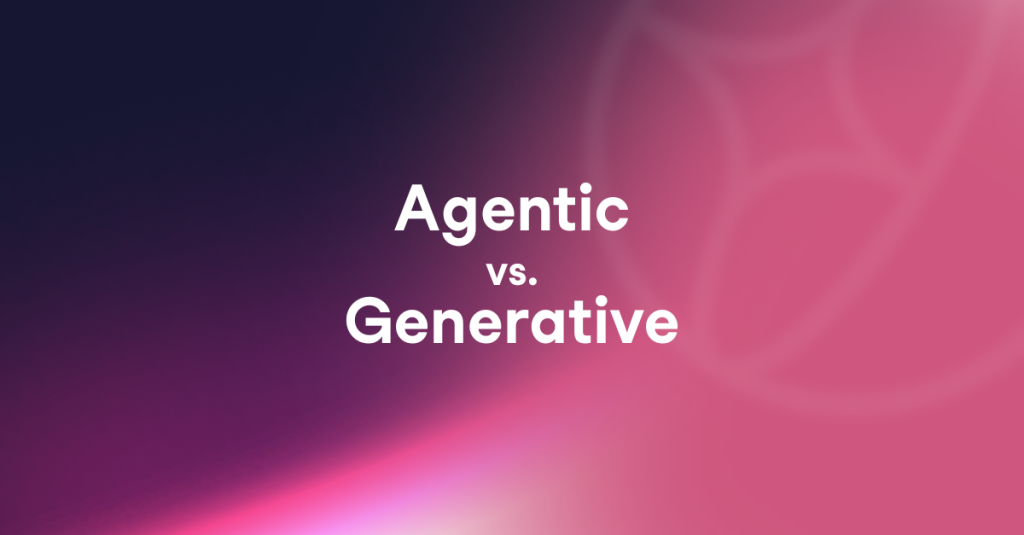Escrito por: Maisa Publicado: 28/08/2025
Generative AI creates, while Agentic AI acts. Generative models focus on producing content such as text, images, or audio, whereas Agentic AI systems are designed to take actions and complete tasks.
Advancements in AI have opened new ways of applying intelligence, moving from systems that generate content to systems that can also complete tasks on their own.

Generative AI refers to artificial intelligence systems that can create new content such as text, images, audio, or video.
These models learn statistical patterns from large collections of examples. When given a prompt, they use those patterns to generate new outputs that resemble what they learned.
Agentic AI refers to artificial intelligence systems that can autonomously execute tasks to achieve a goal. These systems make decisions, plan steps, and use tools or data sources without constant human intervention.
Agentic AI combines reasoning, planning, and action-taking. It breaks down a goal into steps, selects the best actions, executes them through connected systems, and adapts its behavior based on the results.
Generative and Agentic AI address different needs in how organizations apply intelligence. Generative AI is focused on producing content, while Agentic AI extends that capability into systems that act on goals and carry out processes.
| Aspect | Generative AI | Agentic AI |
|---|---|---|
| Primary Role | Content creation | Achieve a goal through action |
| Typical Output | Content (text, image, audio) | Completed task or workflow (e.g., tickets closed, records updated) |
| Autonomy Level | Responds when asked | Operates with minimal oversight |
| Scope | Single step or bounded generation | Multi-step, end-to-end |
| Integration with Systems | Limited | Actively interacts with tools, APIs, and databases |
| Business Value | Productivity and creativity boost | Productivity, efficiency, and scalability |
Generative AI and Agentic AI play different but complementary roles in how organizations apply artificial intelligence. Generative AI enhances productivity and creativity by producing new content such as text, visuals, or audio. Agentic AI extends this impact by driving efficiency and scalability, executing multi-step tasks, and connecting with business systems to deliver outcomes.
The boundary between the two is not fixed. Agentic AI systems often rely on generative models to provide the reasoning and intelligence that make autonomous action possible. At the same time, generative platforms are beginning to incorporate agentic features like planning or tool use.
In practice, the two are converging: Generative AI accelerates ideation, while Agentic AI accelerates execution. Together, they shape how businesses create, operate, and scale with AI.